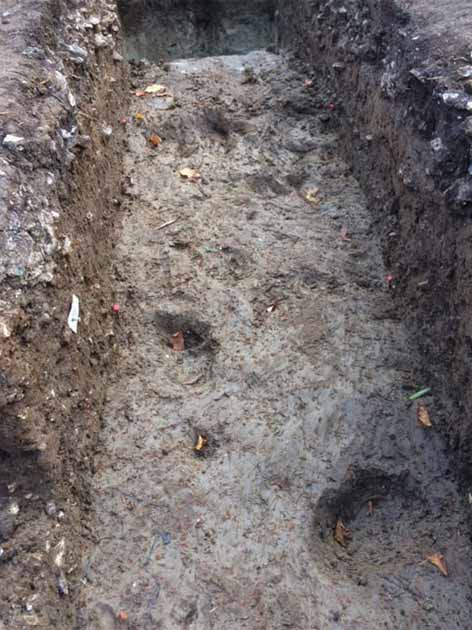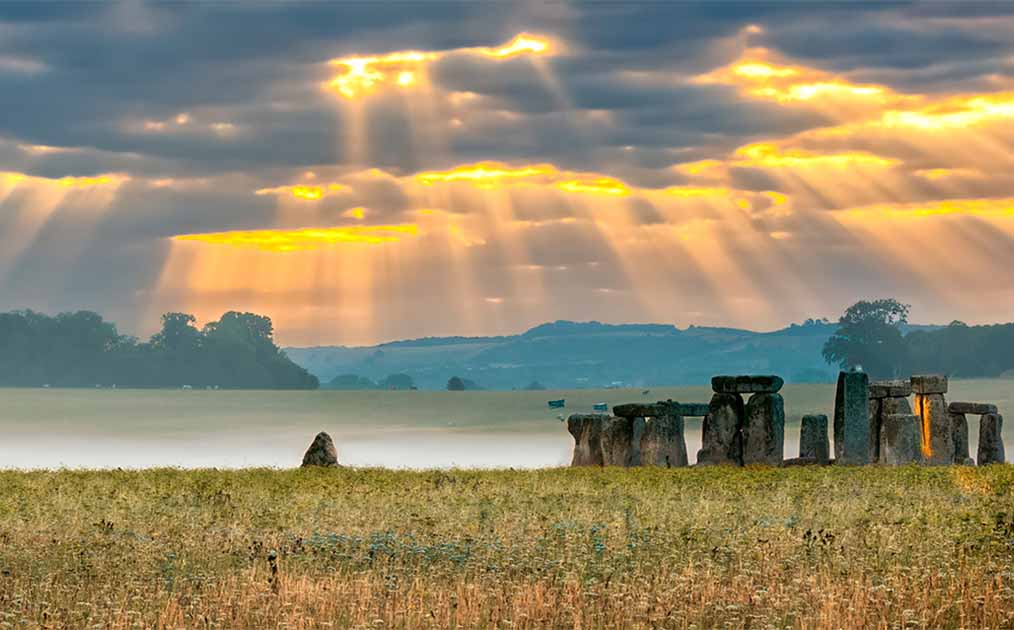Pre-Stonehenge Landscape Was Perfect for Hunter-Gatherers, Study Shows
A new study by a team of scientists from the Geography and Environmental Sciences Department at the University of Southampton has revealed the truth about what the land around Stonehenge was like several thousand years before one of the world’s most famous megalithic structures was constructed.
In 7,000 BC, the land surrounding what would later be the site of Stonehenge was covered by a mixture of woodlands and meadows. The partially wooded and partially open land was home to many grazing species of animals, including aurochs (the forerunners of modern cattle), red deer, wild boar, and elk. The nature and contents of this ecosystem would have made it immensely attractive to human hunter-gatherers, who would have found plenty of animals to hunt in the fertile forests and fields of what is now southwest England.

Aurochs bone with cut marks provides clues to the Stonehenge landscape before the famed monument existed. (University of Southampton)
A New Horizon for the Stonehenge Landscape
This account of how hunter-gatherers survived may sound like a familiar story about life in the late Mesolithic Period (9,000 to 6,000 years ago). But in this instance it actually represents a revelation, because up to now scientists who studied the history of the region had believed something quite different. It was previously thought that the land around Stonehenge in Wiltshire had been covered with dense and nearly impenetrable forest 9,000 years ago, which would have made it a difficult environment for hunter-gatherers to occupy on a semi-permanent basis.
- England’s National Trust Buys Threatened Land Near Stonehenge
- Outside the Circle: The Ancient Stonehenge Landscape – A Wider Perspective
As the University of Southampton scientists explain in an article just published in the journal PLOS ONE, these conclusions were wrong. The researchers discovered the actual characteristics of the site in ancient times from their explorations of a Mesolithic archaeological site known as Blick Mead, which is only about one mile (1.6 kilometers) from the celebrated standing-stone circle on the Salisbury Plain in Wiltshire.
“There has been intensive study of the Bronze Age and Neolithic history of the Stonehenge landscape, but less is known about earlier periods,” explained study lead author Samuel Hudson, in a University of Southampton press release. “The integration of evidence recovered from previous excavations at Blick Mead, coupled with our own fieldwork, allowed us to understand more about the flora and fauna of the landscape prior to construction of the later world-famous monument complex.”

The study shows that Mesolithic populations at Blick Mead made use of the open Stonehenge landscape to exploit large mammals. Image depicts preserved Aurochs hoof prints. (David Jacques / University of Southampton)
Just How Long Was the Site at Stonehenge Considered Sacred?
Starting around 4,000 BC, or approximately 1,000 years before initial construction began at Stonehenge, immigrant farmers from Anatolia (modern-day Turkey and surrounding lands) began to arrive in England and elsewhere in Europe in large numbers. Still more farmers arrived later, this time emigrating from Central Asia, starting around the year 2,500 BC.
It had previously been assumed that these farmers hacked and slashed and burned away the tree cover in southwest England, converting the dense forest into agricultural land and thus opening the area for mass human occupation for the first time. Later on they chose to build Stonehenge, in honor of the gods or wisdom teachers that helped make their land fertile.
But this latest study upends the conventional theory, revealing that the lands of Stonehenge had been occupied long before farming peoples settled in the area. Humans have been around on the Salisbury Plain for at least the last 9,000 years and likely longer, and ancient hunter-gatherers would have created their own unique culture before the agriculturalists came.
This raises the possibility that the Stonehenge site had been considered sacred and special long before the standing stone monuments were erected between 3,000 and 1,500 BC, by people who were descended from a mixture of late Mesolithic hunter-gatherers and early Neolithic farmers.

Aerial image depicting modern-day Stonehenge landscape. (wayne / Adobe Stock)
Revealing the Complex Ecology and Demographics of Stonehenge
The University of Southampton scientists used a variety of methods to uncover information about the past climate and landscape around Stonehenge. They analyzed samples of pollen and fungal spores recovered from the Blick Mead site, and also DNA traces that were preserved in layers of sediment. They also relied on radiocarbon dating and optically stimulated luminescence (OSL) (another dating technology) to identify when various organic samples were deposited at the site.
Correlating all the information they obtained, they were able to prove that the ecosystem had not been exclusively forest in the late Mesolithic period after all. Their historical reconstruction showed that farmers in the Neolithic period had arrived to find a landscape that didn’t need significant modification to be prepared for agricultural activities.
- Monumental Discovery! More of the Stonehenge Origin Story Comes to Light
- World of Stonehenge Exhibition Is a Stunning Treasure Hall of Fame
The researchers believe that indigenous hunter-gatherer populations likely merged with the farmers who came to southwest England starting around 4,000 BC, and that this combined culture would have then created the spiritual or cosmic-oriented belief system that inspired the architects of Stonehenge. The land they chose for this astonishing project was perfect, since it had been open habitat for a long time and didn’t require extensive clearing.
Uncovering the Real History of Stonehenge
Now that it is known that humans were populating this area of southwest England much earlier than previously believed, it will change the focus and perspective of archaeologists digging at Blick Mead and at other nearby locations. The search for ancient artifacts in the vicinity of the Stonehenge site will take on a new urgency, as the researchers seek to learn more about the lives and lifestyles of the hunter-gatherers who occupied the Wiltshire region in the late Mesolithic Period, before the Neolithic agricultural revolution transformed the area forever.
Top image: View of Stonehenge landscape at sunrise. Source: valeryegorov / Adobe Stock
By Nathan Falde




















Comments
Need complete public transparency to whatever is underneath Stonehenge. No secrets!
Nobody gets paid to tell the truth.